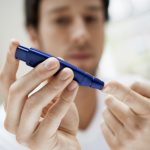Vaginismus is a condition experienced by under 1% of women in their lifetime. Unlike other conditions related to the vagina, vaginismus can be either a physiological condition or a psychological one. However, in many cases, it can be an easy condition to treat, with the vast majority of people who suffer from it being ‘cured’. On this page, we want to give you a brief overview of the condition. This includes a discussion of the causes, symptoms, and the overall treatment for vaginismus.

What is Vaginismus?
Vaginismus is the result of involuntary spasms of the muscles. It occurs when something enters the vagina, such as a tampon or a penis. In some cases, the muscles will tighten up so much, it would be nigh on impossible to put anything into the vagina. In other cases, it will simply cause a lot of pain to enter the vagina.
Causes of Vaginismus
To be honest, we don’t know exactly what causes vaginismus. We do know that there are certain risk factors which give a greater chance of the condition, but we don’t know exactly why it happens. Most doctors seem to believe that it is due to the anxiety of having sex for a variety of reasons. However, they are unsure whether we suffer the vaginismus as a result of the anxiety, or we suffer anxiety as a result of the vaginismus. This is because many people do not discover they are suffering from the condition for a long while after they start to develop it.
Primary Vaginismus
The vast majority of people who suffer from the condition fall into the category ‘primary vaginismus’. This means that they have never been able to penetrate the vagina without experiencing pain. It is often discovered in the late teens or late 20s. While it is a condition which can have no known cause, it is likely that the condition is caused by one of these factors:
- Previous infections around the vagina area, this includes urinary tract infections and yeast infections.
- History of sexual assault – a person does not have to experience the sexual assault themselves, witnessing it or hearing about it is often enough
- General fear of pain from the idea of penetration
- A history of attempting to avoid pain
- Anxiety
- Stress
- Certain forms of education which are designed to ‘scare’ people away from penetrative sex
Even amongst these causes, there can be a variety of ‘severities’ of the condition. The more severe the condition, the more the muscles will move during penetration and the more difficult it becomes.
Secondary Vaginismus
This occurs when somebody was able to experience vaginal penetration in the past, but now it has developed on it’s own. Once again, this can either be psychological or physical. Risk factors include:
- Childbirth
- Fear of partner’s penis is too large, or the vagina too tight.
- Sexual abuse
- Poor body image
Secondary vaginismus is often a lot easier to treat than primary because there is something which demonstrates that vaginal penetration can be achieved.

Symptoms of Vaginismus
Vaginismus is often first spotted when a woman finds it difficult to be penetrated. This does not necessarily mean penetration with a penis, but it often appears when using a tampon or visiting the gynaecologist. Many women who suffer from the condition report intense pain when they are penetrated. It is very rare that the vagina will shut down completely. Instead, a woman may feel as if they are being ‘torn’ during penetration, or as if the thing being inserted into the vagina is unable to travel that much further. Much like hitting a ‘wall’.
Do bear in mind that you should not self-diagnose vaginismus. There are several conditions which can cause similar conditions, and thus it is something which needs to be looked at by a doctor.
Symptoms of vaginismus may vary depending on the women’s circumstances. Some of the main symptoms of vaginismus is:
- Stinging and/ or burning during sex
- Pain when inserting a tampon
- Clenching during sex that makes penetration impossible or painful
When to see a doctor
Sometimes pain during sex can be normal. However, if you are experiencing pain during sex often, for a long period of time there may be a deeper issue.
If you are continuously experiencing pain during sex you should stop having sex immediately, and speak to your doctor.
Treatment of Vaginismus
The treatment of vaginismus will be dependent on why you are suffering from the condition in the first place. This will often be determined by the doctor. In some cases, several different types of treatment may be recommended. It is very rare that vaginismus can’t be fully treated, but it may take a lot more effort in certain cases, particularly if the cause is primary.
Therapy
Since many causes of vaginismus are related to psychological issues, for many women, therapy is the route to go down. A trained therapist will discuss the issues with you, and perhaps provide ‘coping techniques’ which can make the problem a bit easier to deal with. Dealing with psychological vaginismus can be tough to deal with, and will often take months of intense therapy. It may also help in dealing with other anxiety-related conditions.
Physical Therapy
Therapy is often the first step of treatment if vaginismus may have been triggered by an obvious traumatic event. Sometimes therapy for vaginismus may include your partner. Physical therapy may include multiple pelvic floor exercises and experiences that may help you gain better control of these muscle spasms.
Lubrication
In most cases, a woman who is suffering from the condition will still be able to lubricate themselves correctly. However, some women have reported that even a small amount of additional lubrication can really help, particularly if the muscles are only slightly tighter than they should be. If you do decide to go down this route, then make sure that you use a water-based lubricant, otherwise, you will be running the risk of further problems occurring later on down the line. Also consider taking a look at spanish fly products as a natural form of lubrication.
Kegels
Many women have found that doing Kegel exercises is a great way to deal with the problem. To do a Kegel, do the following:
- Squeeze the muscles you use to urinate.
- Hold the ‘squeeze’ for about 10 seconds.
- Release
Do this in sessions of about 20. You can do as many Kegels as you want per day. After a few days of doing this, you can insert a finger gently into the vagina and repeat the exercise. Over time, you should find that the Kegels have ‘desensitized’ you to vaginal penetration. Although, do bear in mind that it may take weeks of daily exercises to see a major impact.
Emotional exercises
Emotional exercises can help you mentally change the way you think about sex, and teach how to prepare yourself for it emotionally.

Current studies
There have been some studies that look into other methods that reduce vaginismus from occurring. This includes the use of Botox and antidepressants, although do bear in mind that the studies into both are still ‘ongoing’ and the results that we currently have on both of them are mixed.
Vaginismus is a condition that few women are affected by. But there are women who suffer the effects of this condition every day. Let’s talk about what vaginismus is.
What type of women is likely to be affected by vaginismus?
It’s hard to say that there is a type of women more likely to be affected by vaginismus because some cases have no direct link or reason. However, vaginismus has been linked to women who have suffered from:
- Sexual abuse
- Painful sex
- Emotional issues
- Medical issues
How does vaginismus affect you?
It can make sex extremely painful or impossible. When affected by vaginismus women will have a very painful experience when penetration is attempted. This painful experience will worsen the condition, it introduces more vaginal trauma; which continues to trigger vaginismus. As vaginismus get worse, the vagina will have tighter clenches during spasms.
Vaginismus after childbirth
How does it happen? Sometimes the pain experienced during childbirth can trigger vaginismus. The condition can be triggered by the natural pain that comes with childbirth or by physical or mental abuse that happens during childbirth.
Vaginismus may also be triggered by pain from surgeries, associated with childbirth.
Vaginismus during menopause
How does it happen? Menopause can cause physical changes such as vaginal dryness. These conditions may make sex physically or mentally difficult. This stress and pain can trigger vaginismus.
You can decrease your chances of being by vaginismus after childbirth by staying sexually active during your pregnancy and by waiting for the complete 6 weeks after your pregnancy to continue sexual activity.

Vaginismus after ovulation
How does it happen? If you experience a difficult ovulation period, whether it was due to:
Physical pain
Abdominal cramps, vaginal pain ( especially associated with intercourse), headaches, etc.
Mental pain
Hormonal related mood swings, stress, depression, etc. Both physical and mental distress can be traumatic events that may trigger vaginismus.
Vaginismus and bleeding
How does it happen? Some women affected by vaginismus may experience bleeding due to:
- Unsuccessful attempts at vaginal penetration
- An infection
- Other health conditions
- Medications
- Surgery
How can I decrease my chances of being affected by vaginismus?
There are various ways to decrease your risk of vaginismus.
Educate yourself
Educate yourself about every sexual experience you have, before it happens. This will reduce your anxiety and stress level, This can be especially helpful for preventing vaginismus after childbirth.
Stay positive
Emotional stress and trauma can trigger vaginismus. You want to be as relaxed as possible.
Take care of yourself
Taking care of yourself physically and emotionally can decrease your chances of triggering vaginismus. Vaginismus is still being studied and hopefully, in the future there will be better ways to decrease your chances. But right now we don’t know all the possible causes of vaginismus.

How can I help a spouse or loved one that is suffering from vaginismus?
You can help a spouse suffering from vaginismus by being patient and showing that you care and understand. You can also help a spouse or loved one by:
- Joining them at doctor’s appointments
- Just by being a listening ear
- Getting involved in their daily activities involving the condition, such as taking medications, and emotional exercises
- Improve your sex quality with aphrodisiac products or even with a natural way
The support of friends, spouses and family members can be very important to the treatment of vaginismus.
Vaginismus is an involuntary condition that you shouldn’t feel bad or ashamed about it. The best thing you can do is learn as much as you can about the condition.
Learn the known triggers of vaginismus such as traumatic events during childbirth, ovulation, or menopause. You should also try a familiar yourself with the classic signs, so you can start treatment during the early stages. The longer you continue without treatment the worse the condition will get.
If you think you may have vaginismus you should see your doctor. It’s important not to let fear stop you from getting treated.

